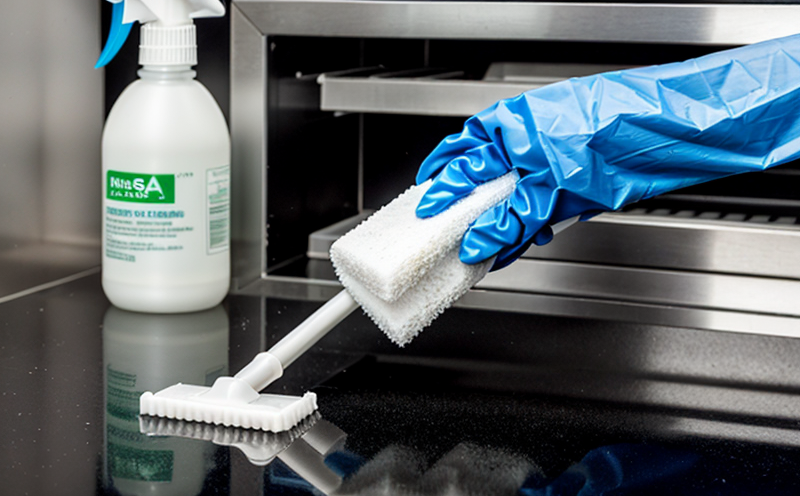EN 14561 Bactericidal Activity Testing of Medical Hygiene Plastics
The European Standard EN 14561 specifies a method to determine the bactericidal activity of medical hygiene plastics used in contact with human skin. This critical testing is essential for ensuring that materials are effective in inhibiting bacterial growth, which is particularly important in environments where hygiene and infection control are paramount.
The standard applies specifically to medical hygiene plastics intended for use in direct or indirect contact with the human body. These include items such as surgical gloves, face masks, gowns, and other personal protective equipment (PPE). The testing procedure evaluates how well these materials can reduce bacterial populations on their surface after exposure to various bacteria strains.
The standard provides a standardized approach for laboratories to conduct bactericidal activity tests. This ensures that results are comparable across different facilities, which is crucial in maintaining the integrity of medical products and ensuring they meet regulatory requirements.
One key aspect of this testing involves exposing specimens to specific bacterial cultures under controlled conditions. The bacteria used typically include common pathogens like E. coli, S. aureus, and others, depending on the intended use of the material. After exposure, the number of viable bacteria is counted both before and after treatment with the test specimen. A significant reduction in bacterial count indicates effective bactericidal activity.
Another important consideration is the preparation of specimens for testing. This includes cutting samples to standard dimensions and ensuring they are free from contamination prior to testing. The specimens must be stored under appropriate conditions until testing begins to ensure consistency.
The results of this test play a crucial role in the development, validation, and certification of medical hygiene plastics. They provide critical data that helps manufacturers demonstrate compliance with regulatory standards and ensures the safety and efficacy of their products.
For laboratories conducting this type of testing, it is important to have well-equipped facilities capable of maintaining strict environmental controls and using precise measurement tools. This includes incubators for bacterial growth, microscopes for counting bacteria, and standardized solutions for preparing samples.
The standard also emphasizes the importance of repeatability and reproducibility in test results. Laboratories must follow strict protocols to ensure that tests are conducted consistently across different batches of materials or over time.
Understanding the implications of this testing is vital for quality managers, compliance officers, R&D engineers, and procurement teams involved in medical hygiene product development. Reliable bactericidal activity testing ensures that products meet stringent hygiene standards, thereby enhancing patient safety and reducing the risk of infections.
| Bacteria Strains | Common Uses |
|---|---|
| E. coli | Surgical gloves |
| S. aureus | PPE gowns |
| Listeria monocytogenes | Food contact materials |
Why It Matters
The significance of EN 14561 testing lies in its direct impact on patient safety and healthcare outcomes. By ensuring that medical hygiene plastics effectively reduce bacterial populations, this test helps prevent the spread of infections, particularly in hospitals and other healthcare settings where cross-contamination is a significant risk.
Effective bactericidal activity not only protects patients but also enhances the reputation of manufacturers who adhere to strict standards. Compliance with such testing requirements can lead to increased market confidence and better acceptance of products by regulatory bodies like the FDA or EU authorities.
For R&D engineers, this testing is an essential step in product development. It allows them to refine material formulations and processes to achieve optimal bactericidal performance while maintaining other necessary properties like flexibility, durability, and comfort.
In terms of quality management, reliable test results are crucial for ensuring that production batches consistently meet the required standards. This helps avoid costly recalls and maintains a positive brand image.
From a procurement perspective, understanding these testing requirements ensures that suppliers deliver products that meet or exceed regulatory expectations. This fosters trust between buyers and sellers and contributes to the overall quality assurance process within an organization.
Scope and Methodology
The scope of EN 14561 includes testing for bactericidal activity on medical hygiene plastics that come into direct or indirect contact with human skin. This covers a wide range of products used in healthcare settings.
Testing involves exposing the specimens to specified bacterial cultures under controlled conditions, followed by quantifying the number of viable bacteria both before and after exposure.
The methodology specifies the use of standard media for growing bacteria, standardized sample preparation techniques, and precise measurement tools. It also emphasizes the importance of maintaining environmental controls throughout the testing process.
These detailed procedures ensure that results are accurate, reliable, and comparable across different laboratories. The standard also provides guidance on interpreting test results to determine if a material meets the required bactericidal activity levels.
The scope is broad enough to encompass various types of medical hygiene plastics but specific enough to provide clear instructions for testing. This makes it an invaluable resource for manufacturers, researchers, and regulatory bodies involved in this field.
Competitive Advantage and Market Impact
Leadership in compliance with international standards like EN 14561 can differentiate a company from competitors. It demonstrates a commitment to quality and safety, which is highly valued by healthcare providers.
Meeting these testing requirements can lead to increased market share as consumers and healthcare institutions prioritize products that meet stringent hygiene standards.
A strong track record in bactericidal activity testing enhances brand reputation, making it easier to secure new contracts and partnerships.
Compliance with this standard opens up opportunities for international markets where regulatory compliance is a key factor. It simplifies the process of exporting products to countries that have adopted similar standards.
In summary, success in EN 14561 testing provides significant competitive advantages and can drive substantial market impact by improving product safety and enhancing brand perception.





